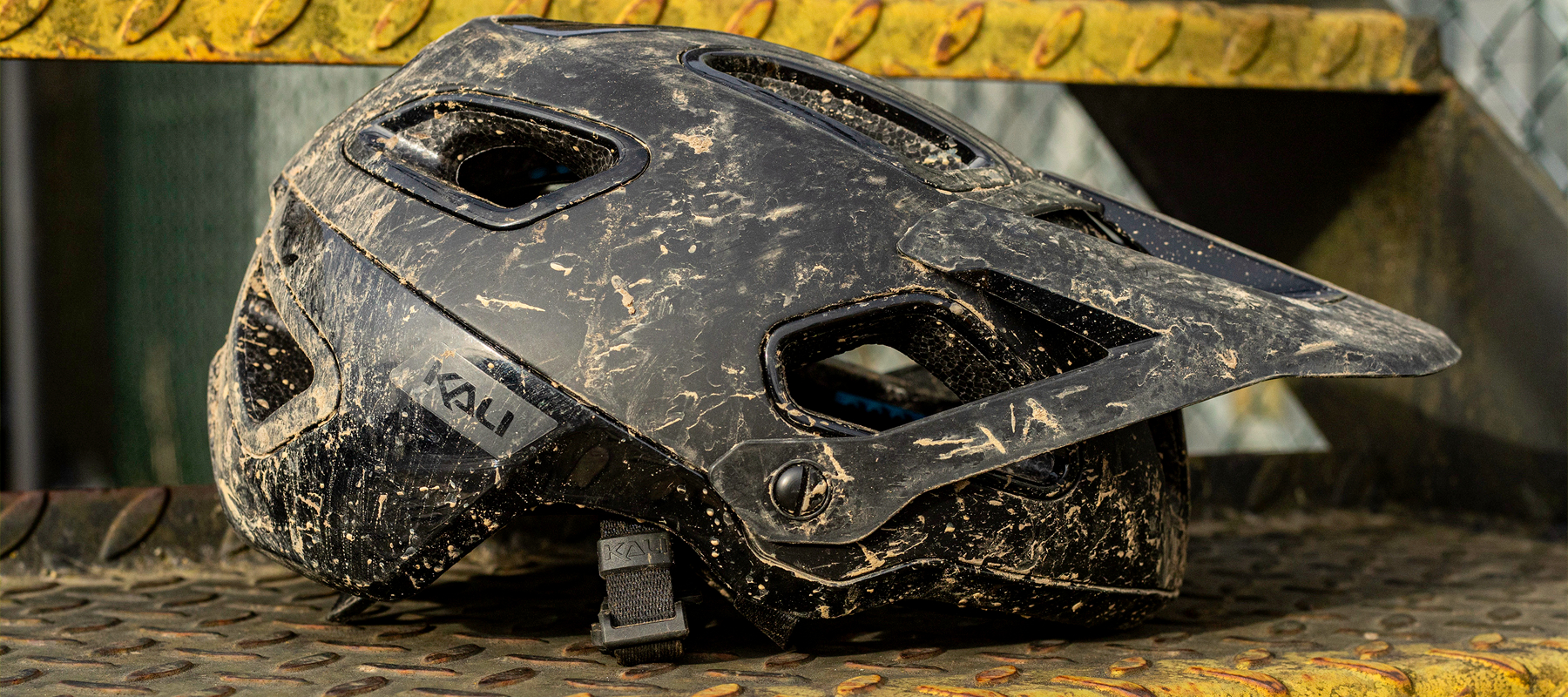Bike Perfect Verdict
Despite decent eco credentials and plenty of performance promise, Kali’s Cascade fit simply didn’t work for me as the rear retention cradle pressed painfully on the back of my neck while riding.
Pros
- +
Well finished
- +
Made using recycled materials
- +
Loaded with safety tech
Cons
- -
Rear retention cradle rubbed so much, it drew blood
- -
High RRP
- -
Lack of brow ports and absorbent padding
- -
Not the lightest
- -
Only two sizes
Why trust BikePerfect
You’d hope an open face helmet costing $260 / £189.99 would be packed with features and safety tech, and, thankfully, Kali’s Cascade really delivers on those fronts.
Kali says the Cascade is the most innovative MTB helmet the US brand has ever made – in terms of both safety features and environmental credentials. It uses a ton of recycled materials in the shell and other parts, leading to a reduction in CO2 emissions by over 58 percent over (presumably Kali’s) standard helmet construction.
Despite the planet-first push, the Cascade is still glossy, stylish and well-finished. It tops up the recycled and sustainably sourced aspect with a whole raft of safety technologies designed to better absorb impacts and improve rider comfort and fit.
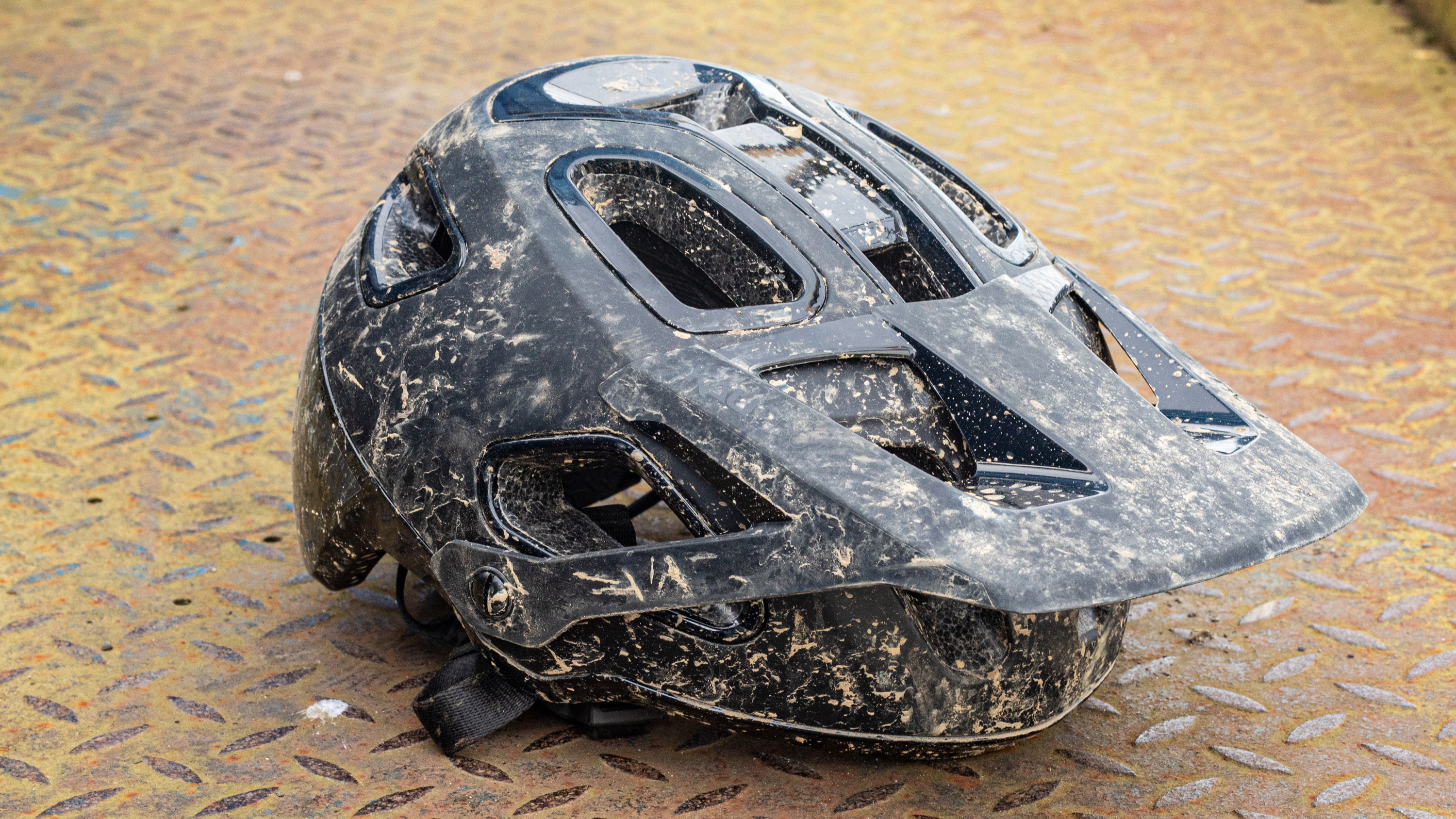
Design and specifications
With deeply-dished coverage, Kali’s shape is pretty organic and free-flowing, rather than sharp and angular. There are big vents throughout, including massive front ports, where the forehead zone looks a little like the 100% Altis to me.
There are 13 vents in total, each one with a reinforced surround aiming to dissipate impact forces over more of the helmet's surface. Six large exhaust ports dump air out of the back, and there are recesses/grooves inside the forehead section to flow more air in channels over the head. There are no separate brow vents pumping air straight onto the forehead in the direction of travel like some lids though.
Kali’s MIPS-style ‘RHEON’ low density padding is shared with its older generation helmets to minimize glancing impacts or angular blows that spin brains inside skulls. It achieves this with small sucker-like Visco-elastic blue tubes that can deform, twist and smear in an impact and absorb some initial impact energy, allowing the outer shell to twist a fraction before it rotates your noggin too much.
This absorption is bolstered by soft antibacterial padding and also extra tech called ‘ConeHead’ inside the EPS (polystyrene) between the outer shell and interior. This sees a dual-layer EPS with a softer low-density foam nearer the head and a firmer outer layer, where both densities absorb different impact velocities better. There’s also custom shaping in the polystyrene to spread impact forces over a larger area, which is claimed to reduce trauma going directly to the brain.
On the eco side of things, all the EPS is recycled, there’s an Oceanworks visor using plastics sourced from ocean debris, chin straps that use old water bottle material (and end with a Fidlock buckle) and sustainably-sourced bamboo pads.
All Kali helmets come with a lifetime ‘no questions asked’ crash replacement that helps justify the high cost too, which is proof of the brand’s commitment to safety.
The Cascade comes in just two sizes – S/M and L/XL. With a 58cm head, I found the smaller size had plenty of room, and there’s a sophisticated fit system with three height positions and a textured tensioning dial to stop the lid from moving around and leaving you exposed if you do need to use that crash replacement program.
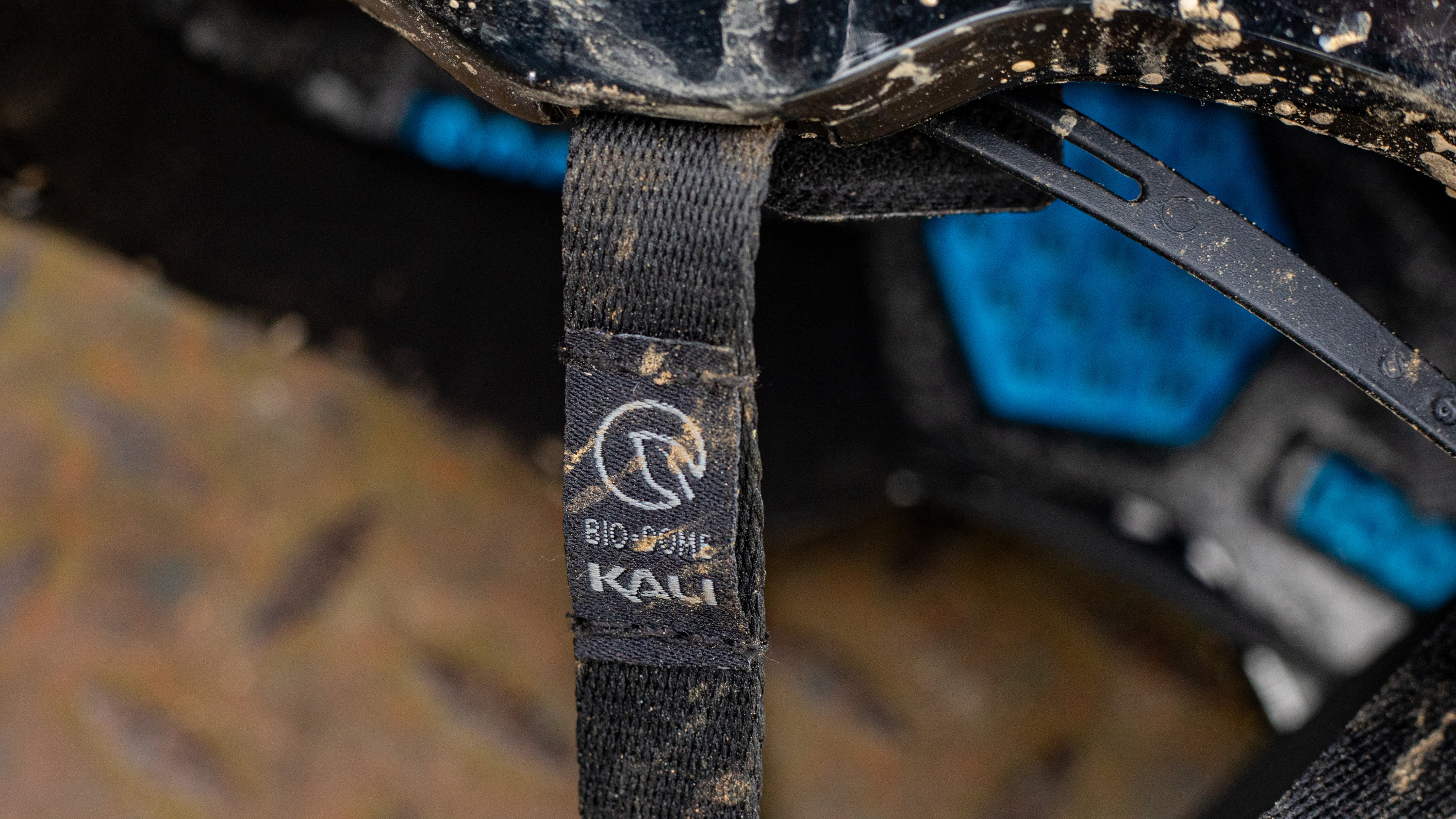
Performance
Much as I’d like to say testing Kali’s Cascade was a breeze, it was only in relation to the excellent airflow, as I had a significant issue elsewhere.
Kali’s build quality is exceptionally good, coming over like a proper top-tier product to help justify the high price. There are no loosely glued little pads and patches like some lids, all plastics and finishing on straps and dials is nicely detailed and smooth, and there’s a very polished, almost two-tone finish to the main shell.
The Cascade sits deep down and planted on the head a bit like Troy Lee A-series lids. With snug pads, coverage right down to ears and wraparound protection near temples and nape of the neck, there’s a sense it would stay nicely in place even with chin straps unfastened; not that I’d recommended that, obviously.
In terms of comfort, interior pads, especially at the brow, aren’t the thickest (one area fit is quite different to Troy Lee), so it’s not quite as good at absorbing sweat or as cushioned as some. But it was at the back of the Cascade I had a real comfort issue that caused me a lot of pain and stemmed from the shape and position of the rear retention cradle.
Heading to BikePark Wales for a couple of days testing, I figured I’d bring the Cascade to get plenty of review ride time. I’d tried it on for size at home and, finding it very comfortable and stable, didn’t bother to bring a spare lid, obviously not expecting what happened next.
After a few runs, I noticed the rear plastic tips of the retention cradle start to dig into my neck when looking forward down the trails. These tips are quite sharp and point downwards in triangular shapes at an angle that’s seemingly slightly wider and lower than most rival lids. Once I was aware the plastic was starting to dig in the back of my neck, I adjusted the height position and fiddled with the tensioning dial to try and sort it out and ended up having to run the Cascade looser than ideal for some of the rougher tracks.
Despite best efforts, within a few more hours, I was in a lot of pain as the cradle rubbed more and more at my neck causing two red raw patches just at the bottom of the hairline.
The next day, without a replacement option to wear, these patches were very sore and throughout the day got worse until riding mates started to tell me my neck was even bleeding slightly at the end of the afternoon. Not exactly ideal for keeping you focused while riding.
I’m aware this might be a personal issue with head shape as I’ve had similar thing with a Giro Montaro years ago (the back of my head is quite pointy and tilts retention cradles forwards). That said, Giro’s lid never drew blood and neither did the dozens of other helmets I’ve tested over the years, so I can hardly recommend Kali’s Cascade for comfort.
It's hard to look outside this issue, but the Cascade definitely cools really well when you’re riding slowly and the interior shape is cosy and planted on the skull, so it might work great for some riders with a different head shape. Whatever your cranium looks like, you’ll pay a hefty premium for Kali’s (obvious) commitment to safety and sustainability though.
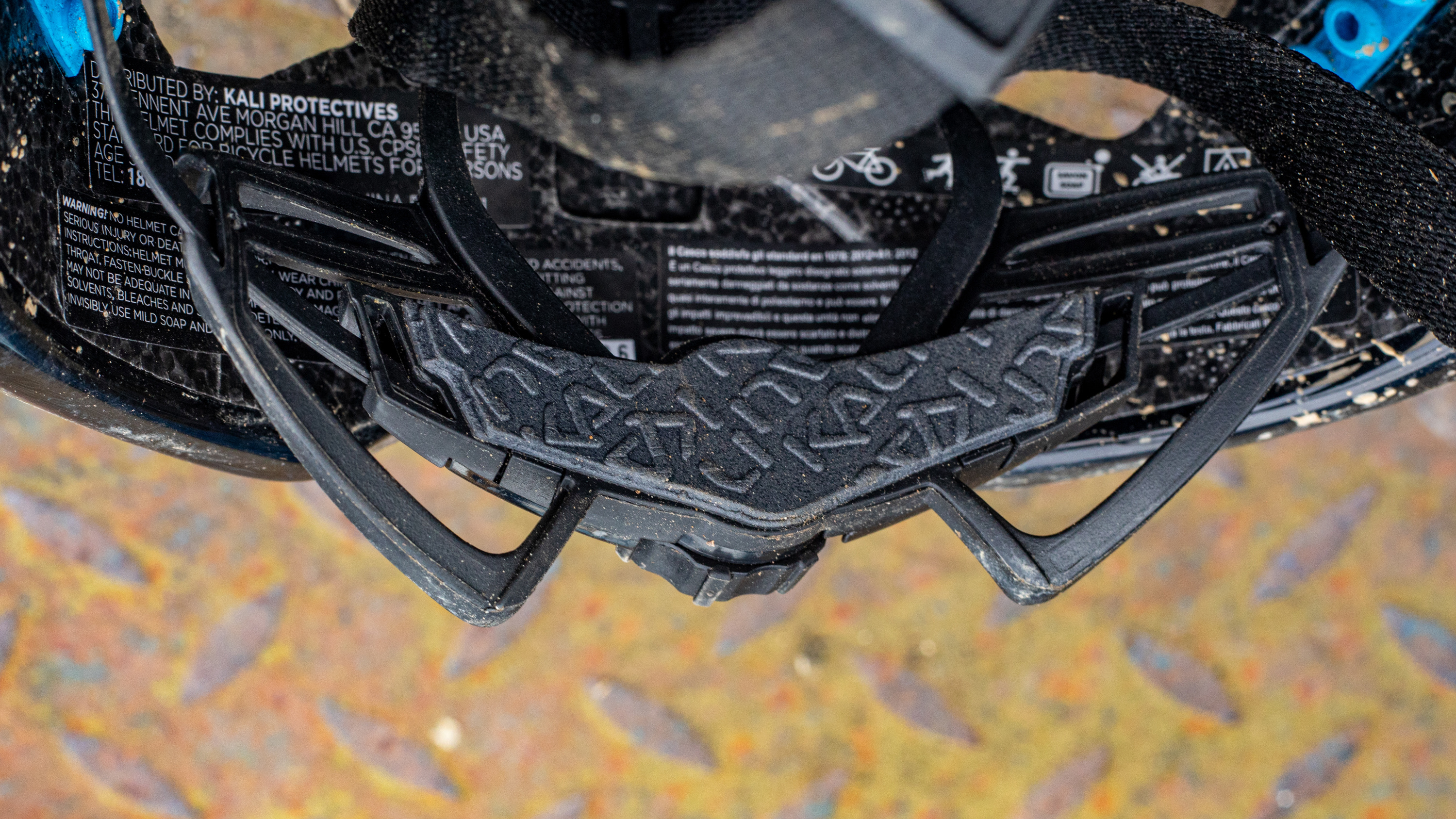
Verdict
Maybe I have an unusually shaped head, but the rear retention dial of any trail lid digging in repeatedly to the extent it draws blood has to be a serious fail.
For riders unaffected by this fit issue, Kali’s lid comes with category-leading safety and eco-credentials, looks great and is very well made. Ventilation is also excellent, particularly in dumping heat when climbing slowly or stationary, rather than directly feeding air onto the forehead like Specialized or Giro high-end helmets do with their dedicated brow ports.
Tech specs: Kali Protectives Cascade
- Price: $260 / £189.99
- Sizes: S/M (55-61cm), L/XL (61-63cm)
- Colors: Matt/Gloss Black, Feather Gloss Green
- Weight: 387g (S/M tested)
- Rival products: Mavic Deemax, Specialized Ambush 2, POC Axiom SPIN, Lazer Jackal KIneticore
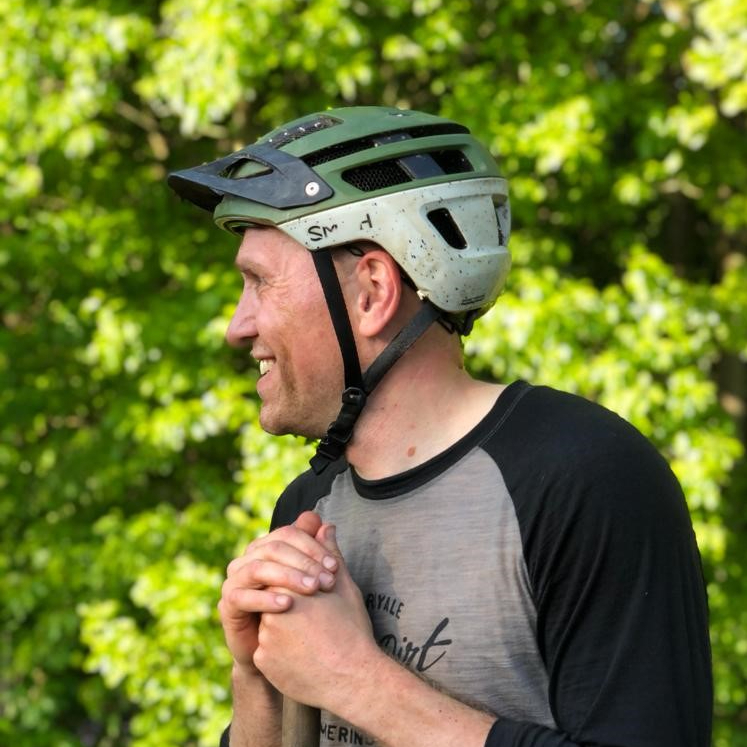
An ex-elite downhill racer, Mick's been mucking about and occasionally racing mountain bikes for over twenty years. Racing led to photo modelling and testing kit for magazines back in the day, and, nowadays, he's mostly riding enduro-style terrain on conventional and electric bikes. As curious as ever about products and tech, he's as likely to be on the other side of the lens or computer screen rating, reviewing and shooting all the latest gear. Mick's list of regular clients includes Bike Perfect, MBR, MBUK, and most of the leading UK MTB publications at one point or another.
